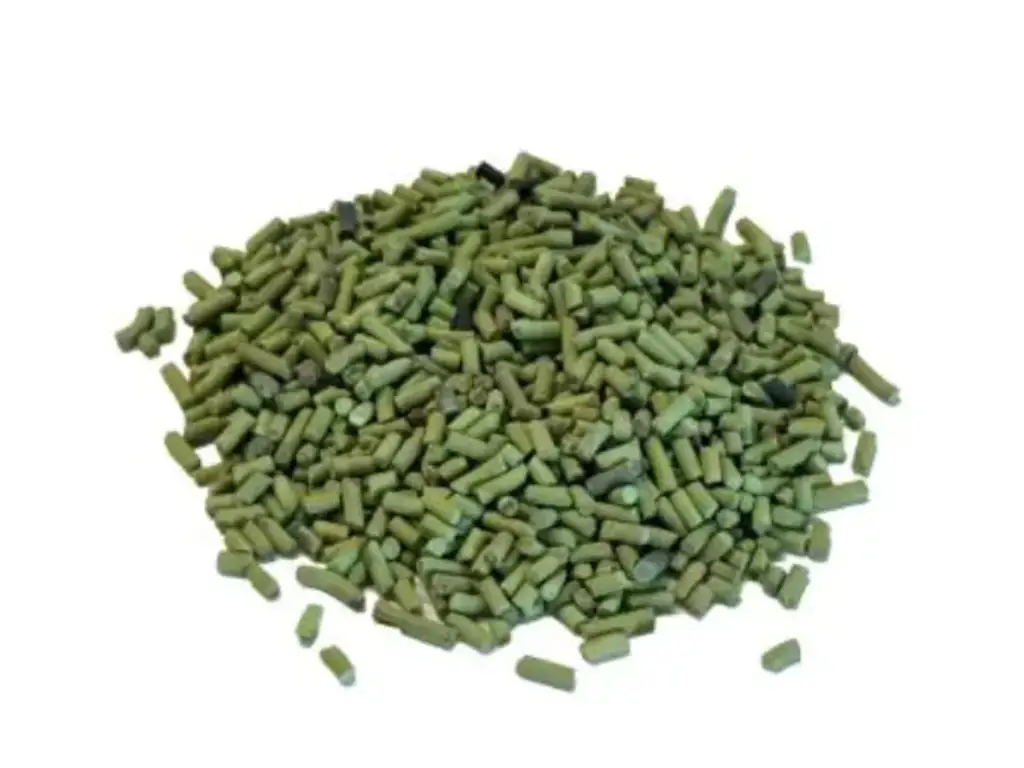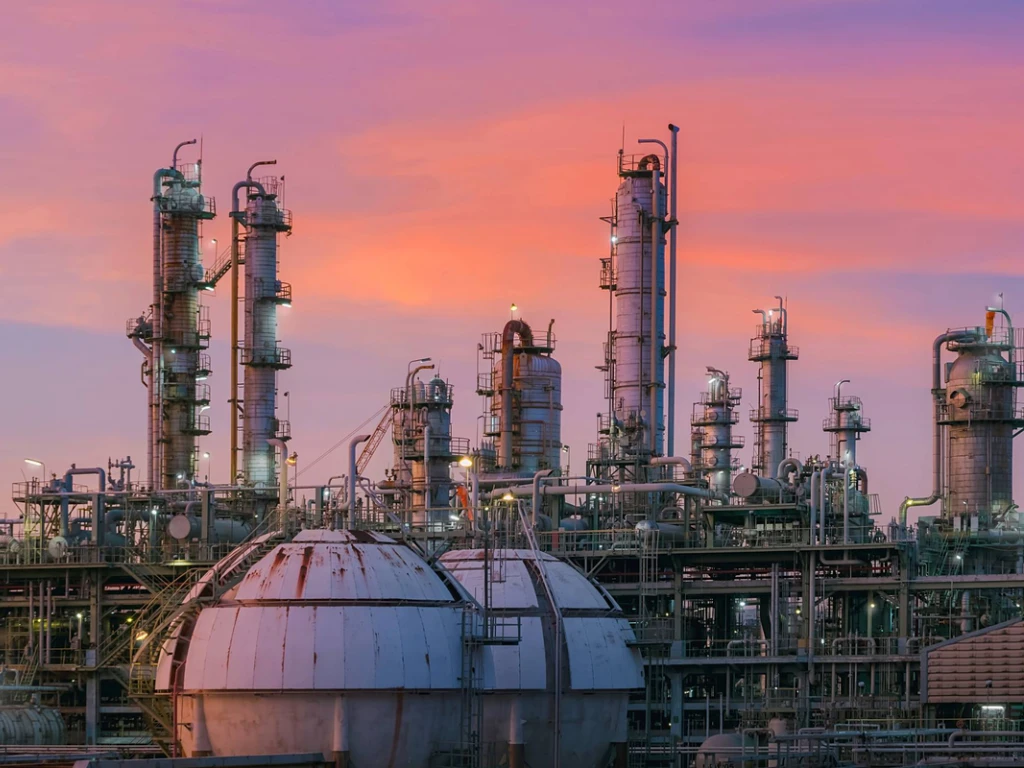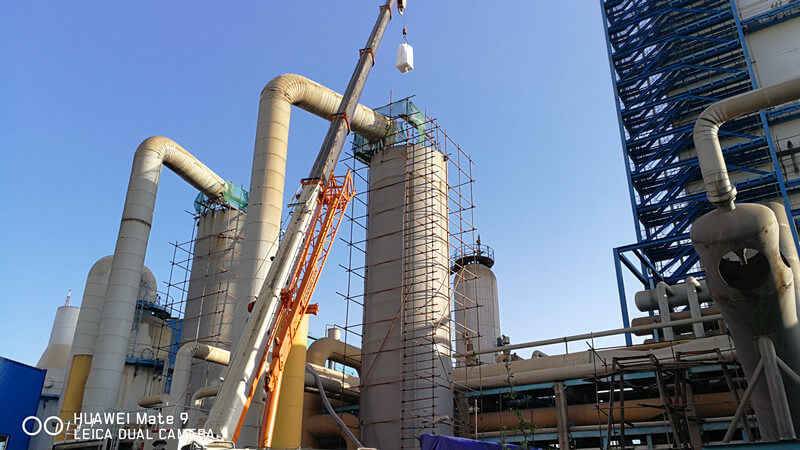What are Molecular Sieves and How do They Function in Water Removal?
Molecular sieves are modern materials with a well-defined pore size that allows the selective adsorption of molecules depending on their size and shape. Mainly consisting of aluminosilicates such as zeolites, their crystalline structure offers selective adsorption characteristics, which makes them suitable for separation, purification, and drying of materials in different sectors.
Molecular sieves are particularly good for water removal. They are referred to as molecular sieve desiccants because they are designed to selectively adsorb water molecules and exclude larger ones. Due to their small pore size, they are capable of trapping moisture effectively regardless of the prevailing conditions such as humidity or temperature. This makes them different from other desiccants such as silica gel or activated alumina that may be less effective under similar circumstances.
Molecular sieves are used in natural gas dehydration, ethanol drying, and refrigerant purification in industrial processes. Any moisture at all can lead to equipment corrosion, interference with reactions, or degradation of the product. This risk is eliminated by using molecular sieves, which can lower water content to less than 1 ppm.
Molecular sieves are unique in their ability to adsorb moisture with great accuracy and at high capacities without interfering with other components in the system. This reliability makes them indispensable for ensuring the technical availability and the protection of industrial goods and services.
Types of Molecular Sieves for Water Removal
Molecular sieves are very efficient desiccant and are used in many industries to dry gases and liquids. Due to their well-defined pore size and high adsorption capacity, they are essential for use in moisture management. In this context, three major types of molecular sieves, namely 3A, 4A and 13X, are described with their special characteristics and uses.
| Molecular Sieve Type | Pore Size (Angstroms) | Key Applications | Advantages |
| 3A | 3 | Dehydration of polar solvents (e.g., ethanol, methanol) | High selectivity, avoids adsorption of larger organic molecules |
| 4A | 4 | Gas drying (natural gas, ammonia, CO₂) and liquid drying | Versatile, durable, suitable for various industries |
| 13X | 10 | Air separation units, natural gas dehydration | High adsorption capacity, suitable for large-scale applications |
3A Molecular Sieve: Ideal for Polar Solvents
The 3A molecular sieve has a pore size of about 3 angstroms, allowing it to selectively adsorb water molecules while not being able to trap ethanol and methanol molecules. This selective adsorption, with its smaller pores, makes it ideal for use in the dehydration of polar solvents without the need for their purification.
For example, 3A sieves can help to achieve a water content of less than 0.1% in ethanol, which is necessary for fuel and pharmaceutical ethanol production. They are thermally stable in the range of 20°C to 350°C, which makes them suitable for use in high temperature processes. This efficiency reduces material wastage and costs of operation, making the 3A sieves a cost effective solution for delicate processes.
4A Molecular Sieve: Versatile and Efficient
4A molecular sieves have a pore size of about 4 angstroms and are general purpose and applicable for gas and liquid drying. They can adsorb water, ammonia and other small molecules such as carbon dioxide. In gas drying, they get to the dew point of -100°C, and they are suitable for use in natural gas transmission where moisture leads to hydrate formation.
In liquid drying, 4A sieves are used for refrigerants, solvents and oils and can remove water content to very low levels (below 0.01%). They are capable of withstanding multiple regeneration cycles, which makes them suitable for the long-term, and they are used in various industries such as the petrochemical and natural gas industries.
13X Molecular Sieve: High-Capacity Drying
The 13X molecular sieve with a uniform size pore size of about 10 angstroms provides better adsorption for the large scale water elimination. It is most useful in air separation units (ASUs) where it guarantees very low levels of moisture in the incoming air. This is to avoid formation of ice during the cryogenic distillation and to avoid damaging the equipment.
Due to its high adsorption capacity, large volumes of gas can be dried with fewer regeneration cycles, enhancing productivity and cutting on maintenance costs. 13X sieves are popular in industries that need large scale drying such as the petrochemical industry and air compressor plants.

Applications of Molecular Seve Desiccant in Key Industries
Molecular sieve desiccants are extensively used in many industries because of its effectiveness in adsorbing moisture and in regulating relative humidity levels from other conventional solutions. This media, with their well-defined pore size and high adsorption capacity, are crucial in maintaining product purity, process effectiveness, and legal requirements. Let’s explore how molecular sieves contribute to four key industries: electronics, pharmaceuticals, chemicals, and natural and energy gas.
Electronics Industry
In electronics industry, moisture control is very important in maintaining the functionality, durability and reliability of delicate components. Water in any quantity can lead to oxidation, corrosion or short circuits in semiconductors, capacitors and printed circuit boards (PCBs). Among the desiccants used in this field, the molecular sieves, especially 3A and 4A types, are most widely used due to their high moisture adsorption capacity and applicability to severe conditions.
Type 3A molecular sieves are used to remove water from small molecules, and they are suitable for sensitive components; 4A sieves are used to remove slightly larger molecules and higher humidity levels, which are typical in manufacturing and packaging. These sieves are often applied in hermetic electronic packing where it is critical to maintain very low humidity below 10%. The advantage of these is the ability to maintain its adsorption capacity even when subjected to high heat conditions such as soldering.
Molecular sieves are faster in adsorption compared to other desiccants such as silica gel and activated alumina, more efficient in ultra-dry conditions and have a longer service life. For example, silica gel cannot reach the low-moisture level and its performance decreases at high temperatures; activated alumina is less accurate in regulating trace moisture. These advantages make molecular sieves the best choice for product quality and low failure rates in this rapidly developing industry.
With the electronics market expected to rise at a CAGR of 5.4% between 2023 and 2030, the need for efficient moisture control solutions such as molecular sieves will be critical in the development of technology and guaranteeing the success of operations.
Pharmaceutical Industry
The drug manufacturing business depends on molecular sieves more so the 3A and 4A ones, to help maintain the stability of its moisture susceptible products. Type 3A molecular sieves can be used to guard small molecule matters such as vitamins and probiotics while 4A sieves are appropriate for large molecules or high humidity areas like storing antibiotics, capsules and other moisture sensitive products. These sieves retain extremely low losses of moisture content, occasionally even below 1 %, eliminating the probable reactions of the drug due to water loss.
That is why other desiccants, including silica gel, calcium chloride, or activated alumina, are occasionally used, whereas molecular sieves outperform them in several aspects. Silica gel, for instance, cannot retain the ultra-dry environment needed for lyophilized (freeze dried) drugs and calcium chloride is less effective over time due to deliquescence (turning into a liquid after absorbing moisture). Molecular sieves, on the other hand retain high efficiency at high temperatures and work at the molecular level to adsorb water selectively without any interference with the drug molecules.
Besides, adjusting the stability of products and facilitating consistent quality and strength of solid pharmaceuticals and formulations, molecular sieves can satisfy different legislature and regulatory norms by respecting the major standards including that provided by the FDA and the EU Commission concerning drug safety and quality. Through the use of molecular sieves, manufacturers have been able to reduce drug stability failures by up to 30% proving the importance of molecular sieves in protecting valuable pharmaceutical products and patients.
Chemical Industry
Molecular sieves especially the 4A and 13X types are widely used in the chemical industry for drying and purification of gases and liquids. The presence of even the slightest of moisture levels can interfere with chemical reactions, reduce the yield of the final product, and even affect the purity of the final product. Molecular sieves with their selective adsorption characteristics, remove water and other contaminants, thus providing consistent production processes.
Type 4A molecular sieves are typically employed for desiccation of ethanol and methanol, which makes them indispensable for the generation of fuel-grade ethanol with water content below 0.5%. On the other hand, 13X molecular sieves with larger pore sizes are useful in the separation of gases including CO₂ and H₂O from natural gas and industrial gases. These sieves are able to perform optimally even under conditions of high temperature and pressure and are therefore crucial in large scale chemical production.
Other materials used for drying include silica gel, activated alumina, and zeolites but none of them can match the accuracy and effectiveness of molecular sieves. For instance, silica gel has a low capability of attaining very low dew points, and activated alumina has poor performance at high temperatures. Molecular sieves, on the other hand, work at the molecular level and also regenerate quickly, cutting down on process losses by as much as a quarter and increasing productivity.
Since they can easily meet the required purity levels and can be used in various challenging applications, molecular sieves are the most popular in the chemical industry. They help to maintain the quality of the product, increase the efficiency of the chemical reactions and, therefore, increase the profitability of the products in this highly competitive industry.
Natural Gas and Energy Industry
Molecular sieves particularly 3A and 4A are widely used in the natural gas and energy industry to ensure the quality, efficiency and safety of fuel production, processing and storage. The water content of natural gas streams is usually high and poses severe problems like pipeline corrosion, formation of hydrates and freezing of cryogenic processes. With molecular sieves, operators are able to eliminate moisture, which is very important for the stability of the systems.
Type 3A molecular sieves are most suitable for dehydration of smaller gas molecules and are used in pipeline drying and gas separation. On the other hand, 4A molecular sieves are commonly applied in the LNG industry where they remove water content in the gas streams to the trace level required for proper functioning at very low temperatures (-162°C). Moreover, molecular sieves also eliminate other undesirable contaminants such as mercury that can cause corrosion or destruction of cryogenic heat exchangers in the event they are not effectively separated.
Although other desiccants like silica gel and activated alumina are used, molecular sieves are superior in some aspects. Silica gel cannot reach the ultra-low dew point that is necessary for LNG processing, and activated alumina has poor performance in high pressure and cryogenic conditions. Molecular sieves are superior in terms of adsorption capacity, rate of moisture removal, and durability of service. They also have a good regenerative capability, which minimizes operational time and cost even more.
For example, research shows that using molecular sieves instead of silica gel in natural gas dehydration can increase equipment service life by 40% and cut maintenance expenses. These advantages make molecular sieves the best choice for achieving efficiency, safety, and cost in the growing natural gas and energy industry.
Molecular sieve desiccants offer essential back up to industries that require high level of moisture removal. In electronics, they prevent failure of delicate parts of an electronic device. In pharmaceuticals, they guarantee the shelf stability of vital drugs. With chemicals, they enhance product quality and the rate of reactions. Last but not the least, in the natural gas and energy sector, they protect the structures and enhance the efficiency of the fuel conversion.
As highly effective adsorbents and versatile materials, molecular sieves remain one of the most important products of the modern industry, providing optimal solutions that combine high performance with reasonable cost. With increasing stringency of industrial specifications, molecular sieves will continue to be an essential enabler of advanced performance and dependability.

Tips for Selecting and Maintaining Molecular Sieves for Optimal Performance
Molecular sieves are used in industrial water removal and purification processes and hence choosing and using them appropriately is important. Below are essential considerations and best practices:
Selection Criteria of Molecular Sieve
When choosing molecular sieves, pore size is one of the most important factors to consider depending on the application. Each pore size is developed to address specific contaminants, including water or carbon dioxide, to achieve the best results. For example, narrow pore size is appropriate for ethanol dehydration, while slightly larger pore size is appropriate for natural gas or air separation.
However, the selection of molecular sieve is not only about pore size. The quality of the material used in the sieve and the credibility of the supplier are as significant as each other. Molecular sieves of high quality are guaranteed to perform well and to have a long life, while a reliable source of supply not only provides the material but also technical assistance. This minimizes operational risks like lack of uniform adsorption or supply shocks that may affect the business.
Proper Maintenance and Regeneration
Molecular sieves should be maintained frequently to ensure that they last long and provide the best performance. Regeneration of the sieves, which involves heating the sieves to remove adsorbed moisture and impurities, must be done at the right temperature to avoid destroying the crystalline structure. When sieves are regenerated properly, they can maintain their adsorption capacity for a long time hence can be used for a long time at a go hence economical. On the other hand, if regeneration is done incorrectly, the pores get blocked and the performance drops sharply.
Preventing Contamination
Contamination is one of the factors that can lead to poor performance of molecular sieves. Contaminants like solid particles, oil or solvent in the gas or liquid phase may plug the pores and thus lower the adsorption capacity. To avoid this, pre-filters or other filtration systems should be used to guarantee the purity of the input material. Further, the molecular sieves are sealed and stored in a dry environment before use to prevent them from being affected by moisture in the environment, which may reduce their effectiveness even before they are deployed.
Molecular sieves are a highly effective desiccant when the type is properly selected for your application, the material is of good quality, and the supplier is reliable, and the sieves are properly maintained and stored. These measures assist in increasing their durability and efficiency in important uses such as natural gas separation, ethanol distillation, and refrigerant dehydration.

Need a reliable partner?
Looking for the best in molecular sieves? With over 20 years of experience, 112 registered patents, and exports to 86 countries, Jalon is your trusted global leader in molecular sieves. Our ISO 9001 and ISO 14001 certifications ensure unmatched quality and sustainability. From natural gas to medical and refining industries, our diverse product range—including A, X, and Z types—offers tailored solutions for every application. Backed by expert technical support and a global network, we’re here to optimize your processes with reliable products and end-to-end services. Partner with Jalon for precision, performance, and peace of mind.









